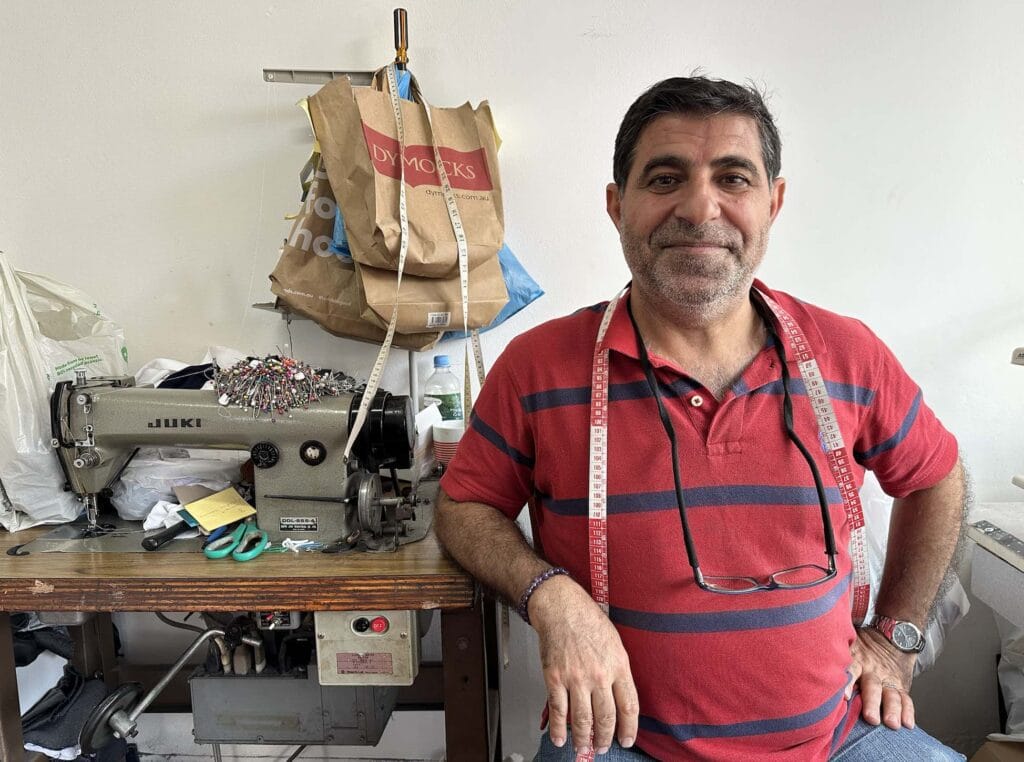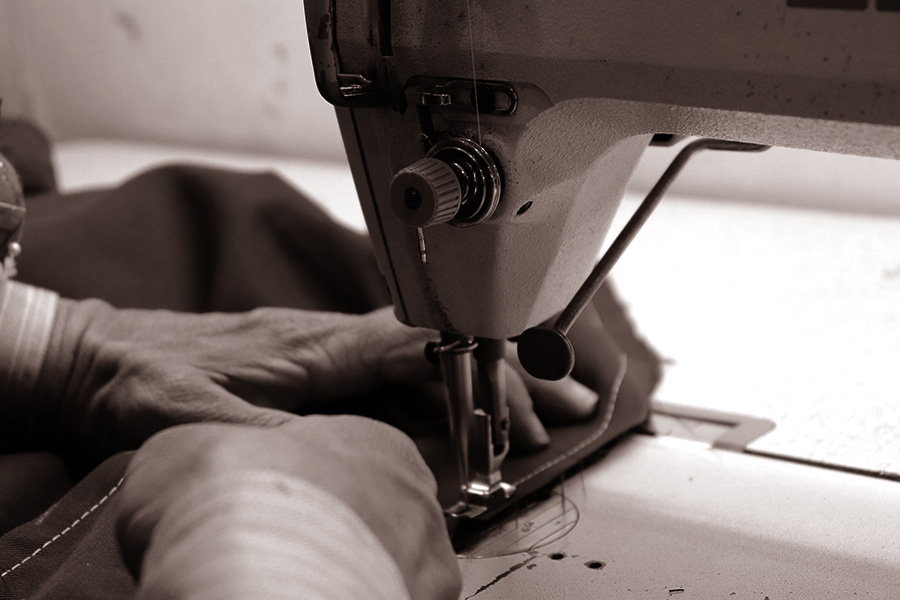Tailor Perth: Outstanding Tailoring for a Perfectly Fitted Wardrobe
Tailor Perth: Outstanding Tailoring for a Perfectly Fitted Wardrobe
Blog Article
Comprehending the Tailoring Refine: From Material Choice to Final Fitting for the Ideal Closet
The tailoring process is an intricate interplay of art and scientific research, starting with the important decision of textile option and finishing in the precise adjustments of last installations. Each textile kind brings special high qualities that influence not only the visual charm however also the garment's longevity and suitability for various occasions. Understanding the subtleties of tailoring techniques can boost one's wardrobe to unprecedented levels of class. As we check out these elements further, one must consider just how even the smallest details can significantly impact the general result of one's personal design.
Relevance of Material Selection
Choosing the appropriate material is critical in the tailoring process, as it directly affects the comfort, durability, and general visual of the last garment (tailor perth). The choice of fabric establishes the structure for the garment's style, efficiency, and capability. Various materials have unique residential or commercial properties, such as breathability, weight, and stretch, which can significantly impact just how the garment drapes and fits the body
In addition, textile choice affects the garment's durability and ease of care. Premium textiles can withstand wear and tear, preserving their appearance and structure in time, while lower-quality products might bring about pilling or fading. Furthermore, the appropriate fabric adds to the garment's ability to change throughout periods and occasions, consequently boosting adaptability.
A tailored item made from an appropriate textile not just showcases craftsmanship yet likewise elevates the wearer's self-confidence. Recognizing the subtleties of material option is critical for any customizing undertaking. It makes sure that the final product not only satisfies the visual wishes of the client however additionally aligns with practical requirements, therefore attaining an unified equilibrium in between kind and feature in the customized wardrobe.
Sorts Of Fabrics and Their Uses
Comprehending the numerous kinds of materials available is essential for making informed choices throughout the tailoring process. Each fabric has one-of-a-kind attributes that dictate its suitability for certain garments and events.
Cotton, recognized for its breathability and softness, is ideal for sportswear and summertime garments. Its convenience enables it to be customized into every little thing from shirts to dresses. Woollen, on the various other hand, is preferred for its heat and framework, making it an outstanding option for formal suits and outerwear - tailor perth. Its natural elasticity assists garments keep form in time.
Silk radiates high-end and is light-weight, making it ideal for eveningwear and fragile blouses; however, it calls for careful handling due to its delicacy. Linen, with its textured finish, is a prominent choice for warm climates, offering a crisp and ventilated feel, however it wrinkles conveniently, which may affect the garment's appearance.
Artificial textiles, such as polyester and nylon, deal toughness and resistance to wrinkles, making them appropriate for day-to-day wear and active clothing. Comprehending these textile kinds and their homes enables better decision-making, ensuring that each customized item not only fits well but also straightens with the desired purpose and occasion.
The Tailoring Strategies Described
The art of tailoring relies upon a range of methods that transform material into well-fitted garments. Central to this process is pattern composing, where a tailor creates templates based upon the client's measurements and wanted style. This first step makes sure that find here the garment will fit the wearer appropriately before any cutting occurs.
As soon as patterns are developed, reducing methods come right into play. Accuracy is critical as errors can cause misfitting garments. Tailors typically utilize different cutting approaches, such as single-layer reducing for elaborate designs and multiple-layer reducing for efficiency on typical patterns.
Basting is an additional essential technique, permitting dressmakers to momentarily sew official statement fabric items together for an initial installation. This approach supplies the opportunity to examine the drape and general shape before final stitching.
Seaming strategies, including french joints and flat-felled joints, improve the garment's toughness and visual appeal. Tailors additionally employ methods such as interfacing and padding to provide framework and form to certain locations, like shoulders and collars.
Last but not least, finishing methods, consisting of hemming and edge completing, make certain the garment's longevity while providing a sleek look. Together, these methods create the foundation of effective customizing, causing charming, tailor-made apparel.
Fitting Adjustments and Considerations

Trick factors to consider include the shoulder fit, which must neither sag neither limit activity, and the sleeve length, which should permit comfy arm activity while keeping a refined look. Additionally, adjustments at the midsection can improve the silhouette, with options to allow out or take in material as needed.
The surge of pants is one more essential aspect; it should rest easily above the hips without creating discomfort, allowing for convenience of movement. Hemming lengths for both pants and skirts must reflect the user's favored style while valuing percentages.

Maintaining Your Tailored Clothes
Correct maintenance of tailored garments is vital to maintaining their fit and look with time. To ensure longevity, regular cleaning is vital. Always follow the care tag guidelines, which might recommend dry cleaning for fragile fabrics or machine cleaning for even more durable materials. Avoid constant laundering, as this can put on down the textile and change the garment's form.
Storage space is similarly important; usage cushioned hangers for coats and see this page jackets to maintain shoulder framework, and store trousers folded up neatly or hung to stop creasing. Safeguard garments from direct sunshine, which can fade colors and damages fibers.
Furthermore, regular examinations for small repair services can avoid larger concerns. Inspect for loose buttons, tearing seams, or signs of moth damages, resolving these troubles immediately to preserve the garment's integrity.
Last but not least, think about seasonal rotation. Using tailored pieces in moderation permits materials to recoup, prolonging their lifespan. By carrying out these upkeep approaches, you can guarantee that your customized garments remain as pristine as the day you initially wore them, enhancing your ideal wardrobe for years to find.
Verdict
The customizing procedure, incorporating fabric option, competent techniques, and exact fitting modifications, plays an important function in creating garments that boost both comfort and design. Each stage contributes to the total performance of the final item, ensuring that clothes not only fits well however additionally mirrors private identity. Recognizing the importance of maintenance prolongs the life of customized garments, strengthening their worth in a well-curated wardrobe. An extensive technique to tailoring culminates in a certain and polished appearance.
Choosing the right fabric is vital in the customizing process, as it directly influences the convenience, durability, and overall aesthetic of the final garment. The option of textile establishes the foundation for the garment's performance, functionality, and style. Different materials have one-of-a-kind homes, such as breathability, weight, and stretch, which can substantially affect how the garment drapes and fits the body.
The art of tailoring counts on a range of techniques that change fabric right into well-fitted garments.The tailoring process, including fabric option, skilled techniques, and exact fitting changes, plays a vital role in developing garments that enhance both convenience and style.
Report this page